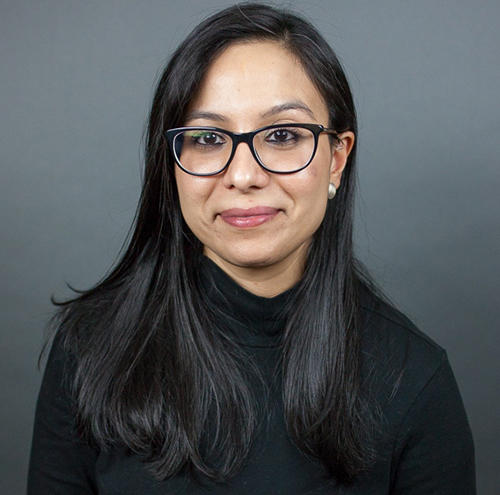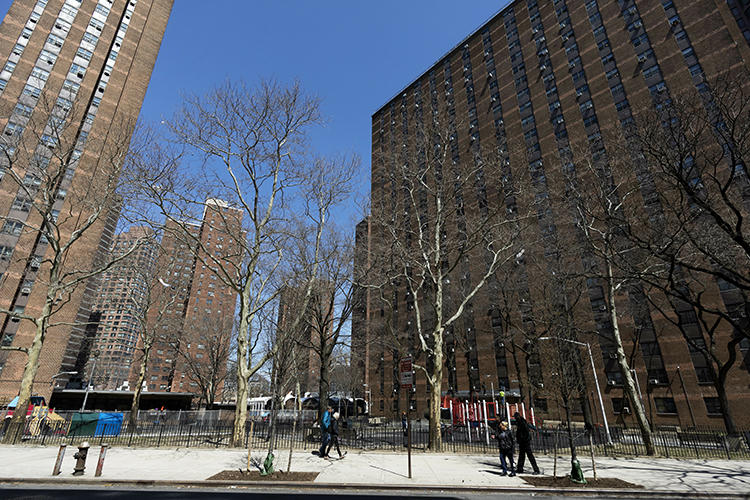For Sadef Ali Kully, a housing and land use reporter for the nonprofit news outlet City Limits, meeting with sources in-person was an integral part of covering her beat in New York City. However, with the advent of the COVID-19 pandemic, Kully has needed to rethink how to perform the basics of her job.
Kully previously worked as a reporter for Pakistani outlet Dawn, where she experienced working as a journalist amid health threats such as dengue fever.
In her current role, Kully said she is acutely aware of how important it is to stay up-to-date on all new federal, state, and city housing initiatives that can have major impacts on readers’ budgets as the United States experiences soaring levels of unemployment.
CPJ spoke with Kully in a phone interview on March 26, 2020. The interview has been lightly edited for length and clarity.
How has the coronavirus affected your work on a daily basis?
My editorial team and my editor had decided that, as soon as schools shut down, we would all stay home. It’s a very serious step for the city to take. When the number of [cases] started growing, we became really glad that we made this decision early on.
I’ve started speaking to some of my sources over the phone, which has been challenging in some ways.
I report on people of color in low-income neighborhoods, and when we speak on the phone, it’s sometimes harder to connect. Whereas, if they see me in person, they see I am a woman of color and it’s easier to explain that I come from an immigrant background, which softens the interaction and makes it easier to speak with them. To have the same connection across the phone is a little bit difficult, but you manage somehow.
Recently, I did a story on NYCHA [New York City Housing Authority] housing projects where I had to physically go and report at the projects. NYCHA was supposed to hire an outside cleaning company, and they were supposed to be scrubbing the buildings clean [to prevent the transmission of COVID-19]. I walked for blocks and blocks in one of the largest housing projects in Red Hook and I didn’t see a single contractor.

When I spoke with people who lived at the projects—and really for any other story—instead of greeting them with a handshake, I place my hand over my heart and say, “Hi, how are you?” and I try and keep my distance. I let them know I’m very serious about [distancing] by saying, “You know, I’m doing this because I care about you and I care about myself too.”
I’ve worked in environments where there have been diseases—like dengue fever in Pakistan—so I used some of the same precautions that I would have used there. Keeping my distance is really important and explaining what I’m doing—you know when you go to the doctor’s office and he explains every single step he’s taking, it’s comforting to you?—I’ve been using that method.
If I take a step back from them, I’ll be like “I don’t want to do anything to hurt you. I’m just taking a step back and I’m still listening to you.” When you’re so used of tying being personable with being in proximity with someone, it can be hard to make the switch.
What about official government meetings?
New York is one of the very few cities where all of that information can be available online. For example, they’re all posted online either via Facebook Live or you can join them [in person].
The only real problem is, each community board meeting has their own budget, so if they don’t have video conferencing in their budget, I don’t know what kind of access [they can provide]. They have to budget in for something like doing a teleconference on Zoom.
Have you considered using any kind of protective gear such as a mask or gloves?
I don’t have any kind of equipment; I don’t have masks and I don’t have gloves on [when reporting in the field]. I was told to stay as safe as possible and that my expenses for doing so would be reimbursed [by my employer]. However, I feel extremely guilty about using protective gear when health workers need it more than I do. So it was a personal choice to not have those items. I remain aware of my surroundings, careful where I place my hands, and I wash my hands constantly.
To get around. I ride my bicycle as much as I can. So, not taking public transportation. I also have access to a car, if I need it. I realize I’m really lucky in this and have concern for a lot of my colleagues who might not be able to afford using alternative means of transportation.
What other obstacles have you experienced when reporting on COVID-19?
A lot of information is coming in at once, so keeping up with the latest press conferences and fresh statistics has been a lot of work.
We’re also really worried about misinformation. We have to be diligent about who’s giving us the information—and why—and think of those things while we’re working very fast. That’s the biggest hurdle.
The governor has been very diligent about his press conferences and what is opinion and what is fact. But we have to parse through what is happening at the federal, local, and state levels.
How have readers reacted to your reporting?
I report specifically on housing and land use issues. So this has a huge impact on people, especially in low income communities who might not be able to work because of the pandemic.
They’re looking for our coverage because they want to know if there is going to be a rent moratorium or a mortgage moratorium, and if there’s going to be an eviction moratorium, and if that’s not going to work out, they need to know if there’s a rental assistance program with the city. We haven’t had this much coverage in a long time.
It has also been difficult to get COVID-19 related information quickly in other languages. As a multilingual reporter, I try to keep an eye out for things like that so I can retweet for our diverse audience. We have been translating in Spanish and other languages as much as possible.
